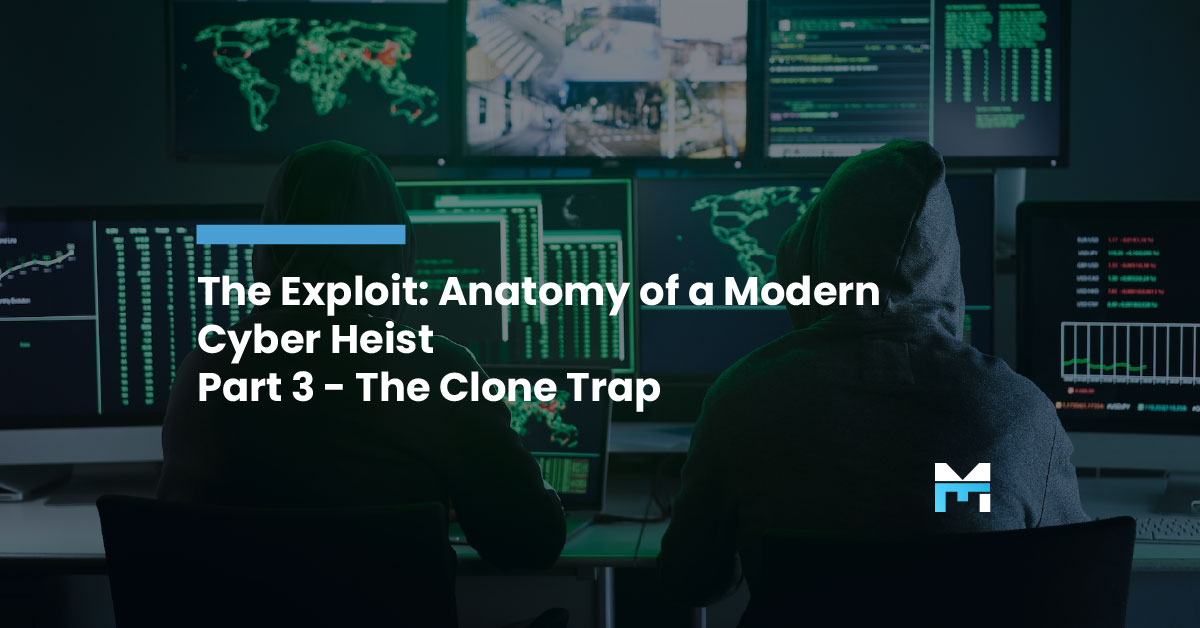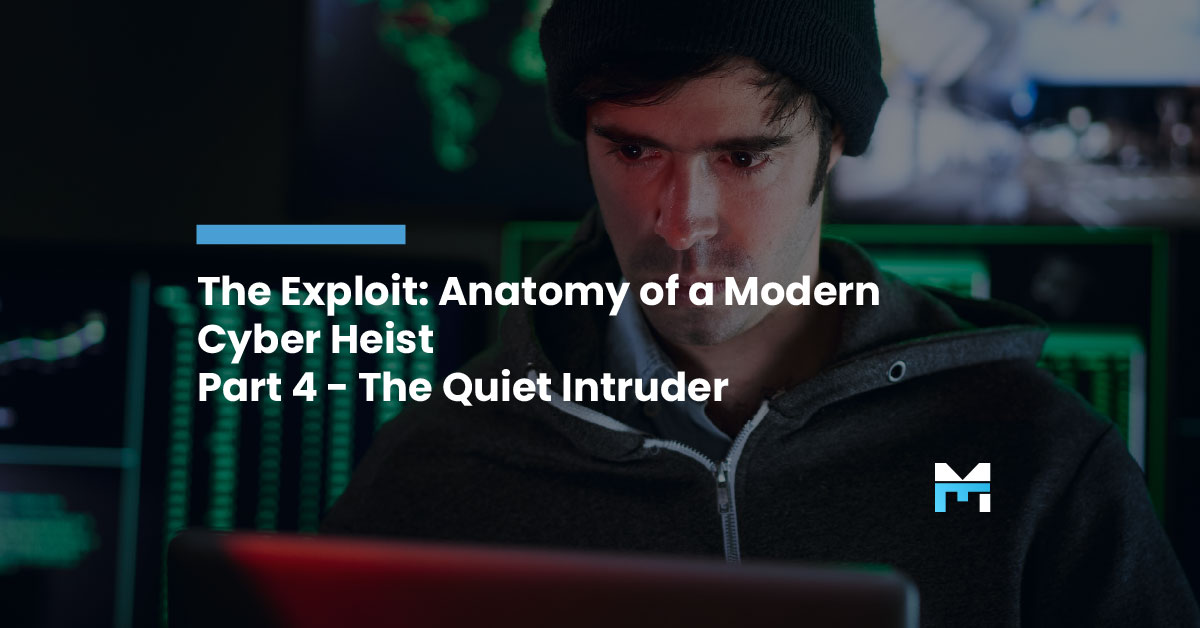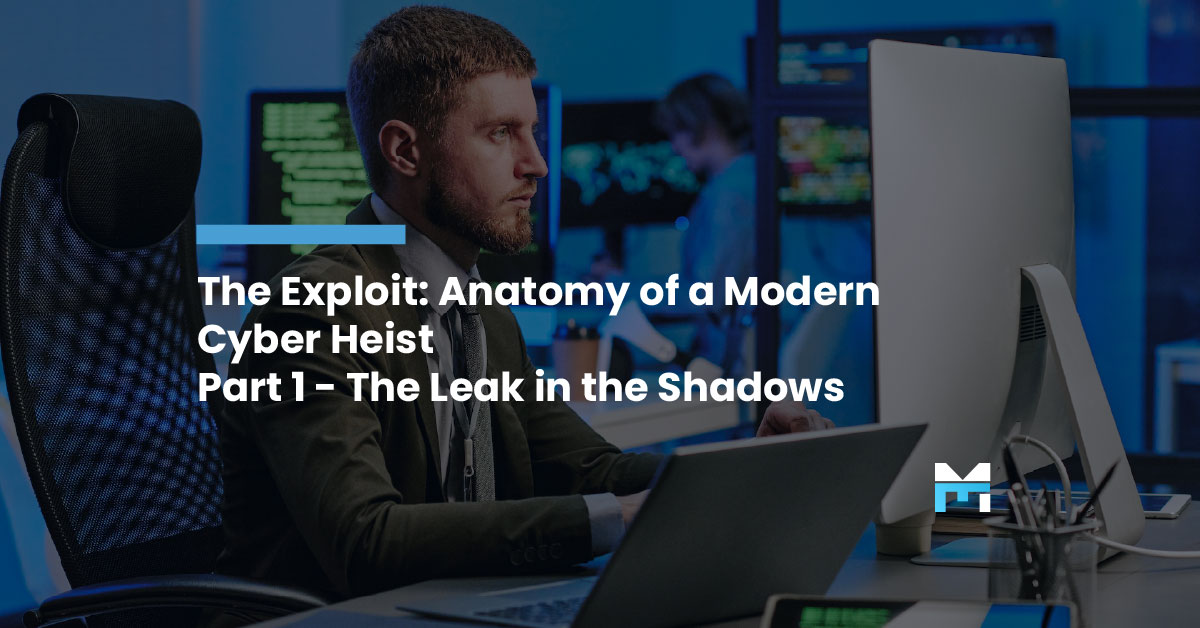The Exploit: Anatomy of a Modern Cyber Heist Part 3 - The Clone Trap
Chad’s login credentials weren’t just stolen—they were live streamed. Not in the Netflix or Hulu sense but in that every keystroke, every click,...
Information Security Compliance
Add security and compliance to Microsoft 365
BI Reporting Dashboards
Realtime pipeline insights to grow and refine your learning operation
Integrations for Banks & Credit Unions
Connect LOS, core platforms, and servicing system
Productivity Applications
Deploy customized desktop layouts for maximum efficiency
Server Hosting in Microsoft Azure
Protect your client and company data with BankGrade Security
3 min read
Justin Kirsch : May 19, 2025 2:30:00 PM

Two weeks later, Chad was sitting at his desk, nearly vibrating with excitement. It was Wednesday, hump day, and he was finally going to meet some friends there after work; he could have gone earlier but one of his college friends was flying in later in the morning, and everyone decided they would rather wait to try the new place until he was with them. He was already thinking about how he could use the experience to make an inspirational post on LinkedIn about a healthy work/life balance and making sure to reward yourself for hard work.
Chad scanned his emails and saw one with the subject line: Updated Invoice – Q2 Retainer.
The sender appeared to be Karen B., an account manager from a third-party vendor they’d worked with during their last system upgrade. The email was crisp and professional and looked exactly like past invoices. There were no typos or awkward phrasing, and it even referenced the name of a real finance system they used. It included a link to view the invoice, hosted, it claimed, on a new “secure vendor portal.”
Chad had seen vendors move platforms before. Nothing about it raised an eyebrow. In fact, the timing made it even more believable. The quarter had just closed, and Chad had recently approved similar payments. The name “Karen B.” rang a bell from a past project, and the invoice amount was reasonable, well within normal ranges for the type of work described. Everything felt routine. So when the email mentioned a new secure portal to download the invoice, it didn't feel like a red flag. It felt like a standard vendor update. Chad clicked without hesitation.
The link led him to what was supposedly the vendor’s new billing portal. But the login page looked identical to CYA Finance’s internal payment system—the one Chad used regularly to process outgoing invoices. The colors, the logo, the layout—everything was indistinguishable from the real thing. The domain name was subtly off, but close enough that it didn’t raise suspicion. And when he entered his credentials, it even prompted him for two-factor authentication, just like the real system would. He typed in the verification code sent to his phone. The screen blinked, then redirected to an error message: Session Timeout. Please try again later.
Frustrated but not suspicious, Chad moved on with his day, assuming it was a minor glitch or an issue on the vendor's side. What he didn’t realize was that the real issue had already begun.
What Chad didn’t know was that he’d just handed over his login credentials and a valid MFA token to NullGhost. The portal was a proxy, built to mimic his company’s real system and intercept everything in real time.
NullGhost was now in. Fully authenticated. Fully invisible.
They quietly accessed finance records, copied vendor data, and began setting up additional redirect rules within ABC’s email system. Any message from the real vendor going forward? Auto-forwarded to NullGhost’s sandbox. That way, nothing would disrupt the illusion.
This wasn’t a random phishing kit. It was targeted. Customized. Fueled by the data NullGhost had mined during their earlier recon. They knew Chad’s tone, his vendors, even how his company’s portals looked. Every detail made the lie believable. And every second Chad delayed reporting the error gave NullGhost more time to move.
Chad thought he was paying an invoice. Instead, he opened the gates.
Coming up in Part 3: The Clone Trap
What happens when a fake login page isn’t just stealing credentials, but hijacking entire sessions?

Chad’s login credentials weren’t just stolen—they were live streamed. Not in the Netflix or Hulu sense but in that every keystroke, every click,...

Three weeks had passed since Chad clicked that fateful link.

Welcome to part one of our fictional, yet oh-so-realistically plausible series about cybersecurity failures and the lessons every business...